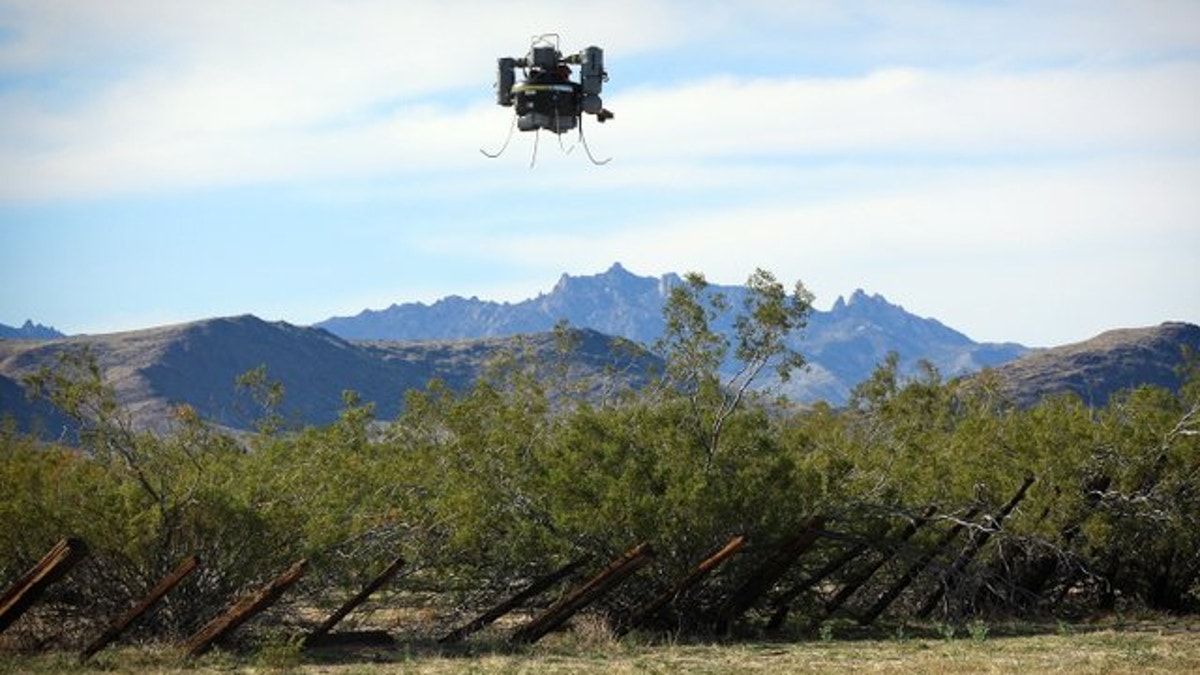
April 13, 2013: This photo shows the USGS THawk drone being used during a survey of abandoned solid waste in the Mojave Preserve. (AP/USGS)
SEATTLE – As the dry weather sets in and the wildfire season beckons, Washington state won't have an aerial drone to help combat the expected blazes.
Earlier this year, the state Department of Natural Resources considered obtaining an unmanned aircraft to test during this year's wildfire season, even discussing the possibility with the Federal Aviation Administration, which has to give approval to launch a drone.
Those plans won't materialize this summer, but the agency's interest in using drones remains.
"We'd consider any technology that allows us to more safely suppress wildfire season," said spokesman Matthew Randazzo. "During wildfires, flying unmanned aircraft for information-gathering purposes is potentially safer and cheaper than manned aircraft, and they may be able to provide more timely and in-depth data to our firefighters on the ground."
DNR would have been one of the first non-law enforcement agencies in the state to purchase and operate a drone.
As drones continue to enter domestic airspace, their potential uses have begun to take shape, including helping out during wildfire season the country's often scorched West.
Since at least 2006, drones owned and operated by federal agencies have been used and tested to aid in combating wildfires. That year in a test with NASA, a drone was used to seek out hot spots over a fire in California. In 2011, a U.S. Customs and Border Protection drone assisted fighting Arizona's largest wildfire on record.
The FAA approves use of drones on wildfire suppression on a case-by-case basis. To agencies in charge of helping suppress fires, that presents a challenge.
"It can be and would be a challenge, but it wouldn't be insurmountable," said Bob Roth, Aviation Management Specialist for the U.S. Forest Service.
The Forest Service has formed a special task group to explore the use of drones for their needs. They have tested some of it already. The 2006 California flight was in partnership with them and they have applied for and obtained other FAA flight certificates to carry out tests.
Drone use could go beyond wildfires. They could be used to assess forest health, and for law enforcement and research, Roth said.
Since 2006, university and federal researchers in Alaska have used the ScanEagle drone, built in Washington state, to operate an array of research projects, including counting seal populations. The U.S. Geological Survey has also used drones to count animals and land management, with one of the latest forays happening in Nevada where a small unmanned aircraft will help count deer and sheep.
But they are not without controversy. Privacy advocates and those worried about government intrusion have often looked at drones with weary eyes.
Seattle Mayor Mike McGinn scrapped the police department's drone program before it began after public outrage earlier this year. A measure that would have regulated the purchase and use of drones by state agencies and local municipalities, which DNR testified against, attracted bipartisan support and lively debate earlier this year before failing to get a vote.
For wildfires, drones can be used to fly in conditions that would put human pilots at risk, such as smoky conditions. Also, some models of drones can also fly for hours longer than the fuel allows manned aircraft to fly or pilot fatigue.
"There's lots of potential in how they could be used. Wildfire being one of them. I think the challenge is to define the proper niche. And make sure it meets a mission and a business requirement, and it's cost effective," Randazzo said.

